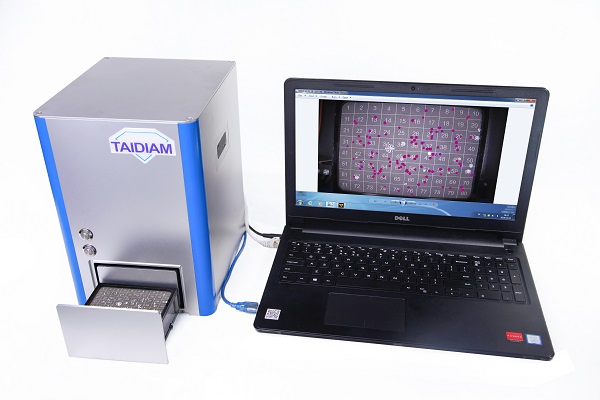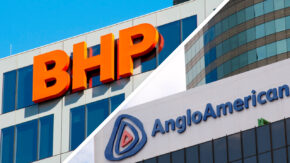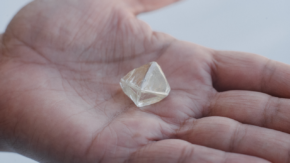RAPAPORT… The massive project by the Diamond Producers Association (DPA) and Signet Jewelers to test and review 18 synthetic-diamond detectors has raised an important question: What should you look for in such a machine?
Accuracy is, of course, a major part of the equation
(alongside speed, price and usability), but it isn’t a clear-cut issue. The first
set of results from the DPA and Signet’s Assure Program, which came out last
week, gave up to nine different performance scores for each scanner, reflecting
their varied abilities.
The criteria don’t all apply to every machine, as only five
of them can conclusively detect lab-grown diamonds, while six merely claim to
refer questionable stones for further checks. The other seven are still
undergoing testing.
Definitely natural
The DPA believes the most important factor is the ability to
verify that a diamond is natural, rather than being able to say that a stone is
definitely synthetic or definitely a simulant. It calls this key metric the “diamond
false-positive rate.” The good news is that all but two devices scored 0%,
indicating they didn’t mistakenly label any man-made stones as natural. (See the
list at the end of this article.)
“It’s a reflection of the instrument’s ability to ensure
that only natural diamonds are verified as natural diamonds,” said Jean-Marc
Lieberherr, CEO of the DPA. “From a consumer perspective, this is the primary
function of a diamond-verification instrument.”
Consumers expect retailers to give formal reassurances that
their products are what they say they are, and those are only as reliable as
the detection machines the retailer or supplier used, Lieberherr explained. Out
of all the associated risks, the main one is that a synthetic diamond should
mistakenly be sold as natural, he added.
Refer: A friend?
That measure is far from the only important one. A machine
that’s overly strict, wrongly referring some natural diamonds for further
testing, might be good if you want to be sure you’re left with only natural
stones. But those additional tests may be expensive. You might need to buy more
than one machine. Plus, a buyer who receives a batch of natural diamonds and finds that some
of them can’t be verified may grow unnecessarily suspicious of his or her
supplier.
That’s why some traders may also look at the “diamond
referral rate,” which is the percentage of natural stones that a machine
categorizes as undetermined (“refer”). Again, 0% is the best, with only one
instrument — De Beers’ DiamondView — achieving that. Some machines didn’t
get a score, as they don’t classify stones as “refer.”
Looking for lab-grown?
But what if you’re a synthetics company looking to ensure
your inventory comprises entirely lab-grown diamonds? The relevant measure might
be the “synthetic-diamond false-positive rate,” which assesses how often
machines wrongly labeled stones as lab-grown, when they were in fact natural diamonds
or simulants.
“The relative importance of the other metrics is up to the
individual device buyer, as there may be different motivations,” Lieberherr
noted. “For example, some synthetic-diamond dealers may want to pull out all
the synthetics, and would care less about the referral rate.”
Sure thing
Other measures give an idea of machines’ more categorical
findings. Only a few were perfect at identifying natural or synthetic diamonds
conclusively. DiamondView was the only one that correctly spotted all the
natural diamonds, without mislabeling or referring any of them. The De Beers
machine was also one of only two that categorically identified all the
lab-growns, the other being the Sherlock Holmes from Yehuda. (Presidium’s Synthetic
Diamond Screener II didn’t get a score for that measure because it only refers
stones, though the Assure Program’s initial report wrongly gave it 100%, a DPA
spokesperson confirmed. Rapaport News has corrected an earlier
story to reflect this.)
However, most people who buy synthetics detectors are mainly
interested in being sure that the stones they think are natural are indeed so.
By that measure, most of the devices gave a good showing.
Machines that scored full marks:
Diamond false-positive rate of 0%:
(the percentage of synthetic diamonds or simulants wrongly
classified as natural)
AMS2 (manufactured by De Beers)
DiamondDect 3 (Taidiam Technology)
DiamondSure (De Beers)
DiamondView (De Beers)
GIA iD100 (GIA)
M-Screen+ (HRD Antwerp)
Sherlock Holmes (Yehuda)
SYNTHdetect (De Beers)
Synthetic Diamond Screener II (Presidium)
Diamond referral rate of 0%:
(the percentage of natural diamonds referred for
further testing)
DiamondView (De Beers)
Diamond accuracy rate of 100%:
(the percentage of natural diamonds correctly
categorized as natural)
DiamondView (De Beers)
Image: Taidiam Technology’s DiamondDect 5 — one of 18 machines undergoing
testing under the Assure Program. (DPA)



